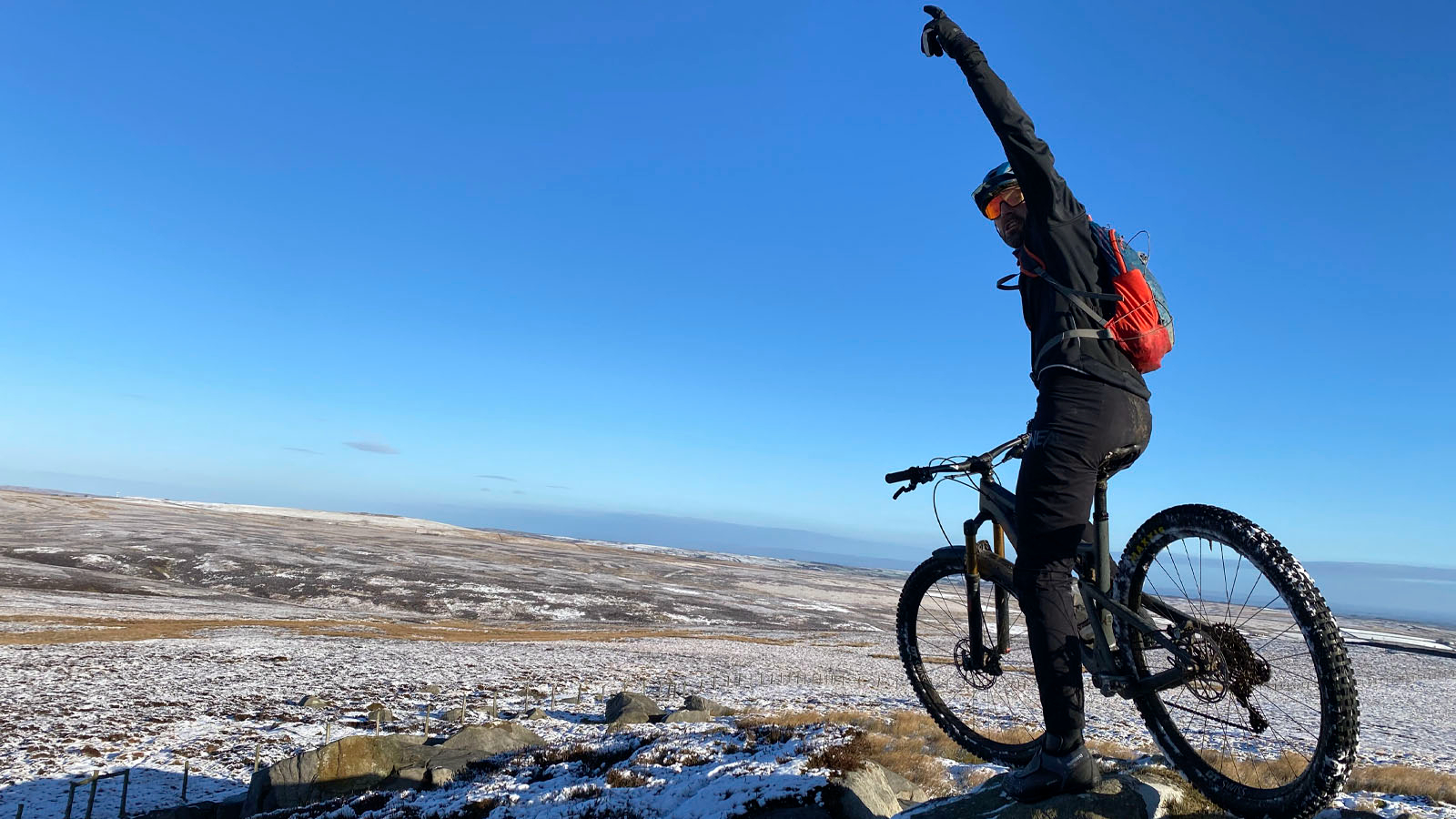
With storms lashing rain across windows and finger freezing, foot numbing temperatures, winter can be a killer for your riding vibe. Prep and protect yourself properly with this expert advice though and I guarantee your dark and dirty rides will be some of the most fun of the year.
And for advice on keeping your bike in good shape, see Guy's expert tips to stop winter killing your bike.
1. Don’t hibernate, accelerate
If you’re struggling to find motivation then there’s loads of positives to pull out of the puddles. If you ride through winter you’ll come out the far side a lot fitter and less fat if you just slob on the couch until it’s dry again. And yeah you could do down the gym or going swimming, but you’re going to have to really get into your deadlifts and tumble turns to come back as stoked as you would from a ride. Throwing yourself into the mosh pit of the muddier months will spit you out into spring with way more slide around, loose riding skills which will translate to dry riding really well. Plus, let’s be honest, if you’re anywhere in Northern Europe or North America ‘winter’ regularly turns up right through ‘summer’ these days anyway.
You’ll soon realize that winter riding is nowhere near as nasty as it looks too. The rain on the window always sounds and looks way worse than actually being out in it. Because mountain biking is such a physical activity you’ll always be creating plenty of heat to keep you warm too. Once your feet have warmed up and you’ve got a brew in your hand, the buzz from getting out there is just as good as cold beers after a dusty summer session.
Expert tip
If you don’t think the filthiest riding can still be awesome, get onto YouTube, watch ‘Danny Hart's DH World Championship run Champery 2011’ and hear Rob Warner and Nigel Page lose their sh*t about how sick winter skills can look any time of the year.
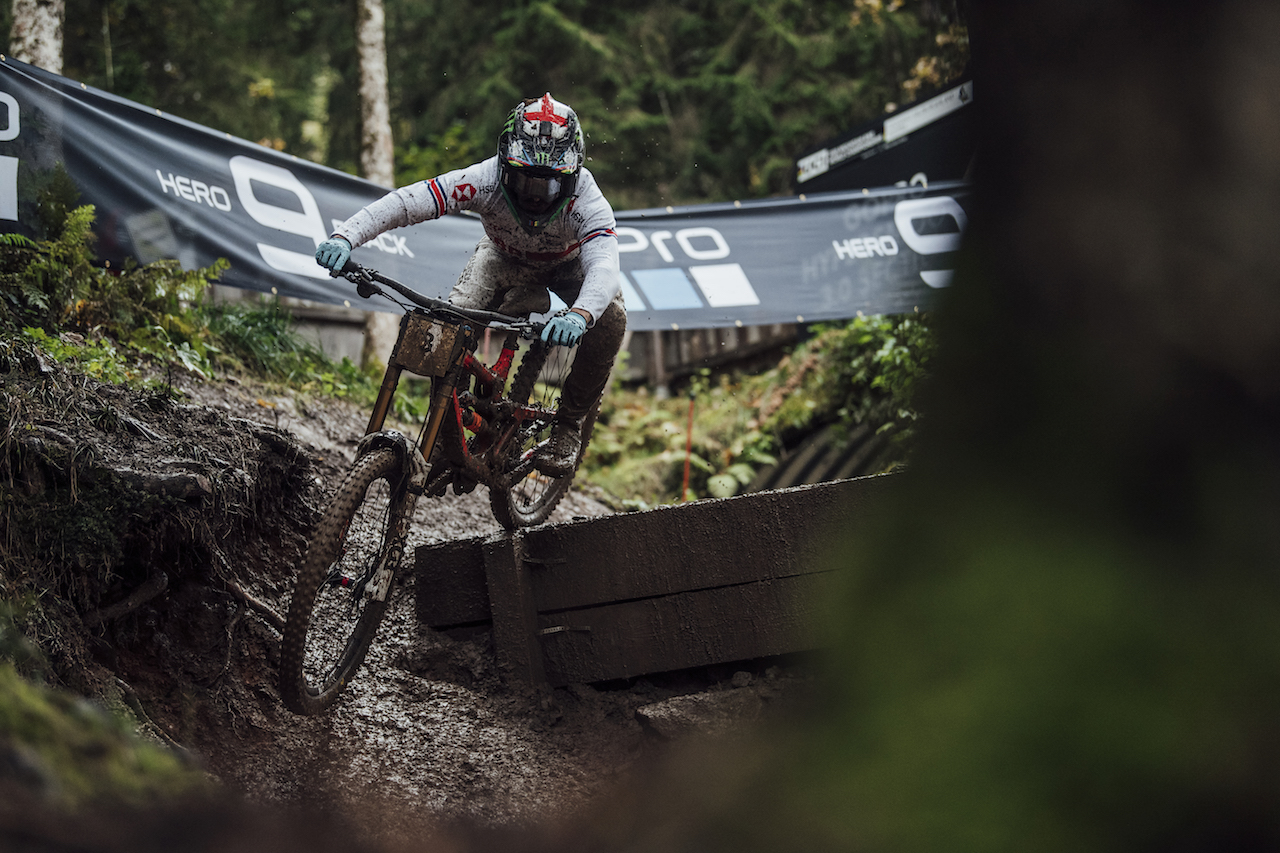
2. Gang up on winter
Whatever kit you have, nothing makes winter riding more fun and more likely to happen than your mates. Knowing some other nutter is going to be slopping and sliding around with you is a massive boost to motivation – especially if they’ll crucify you if you cancel on them. Riding in a group is also a lot safer in terms of support and summoning help if you get stuck with a mechanical or injury in bad weather.
Expert tip
Big groups can be a right laugh but more people inevitably means more stops and faffing, so pack extra clothing for warmer waits if your crew becomes a crowd.
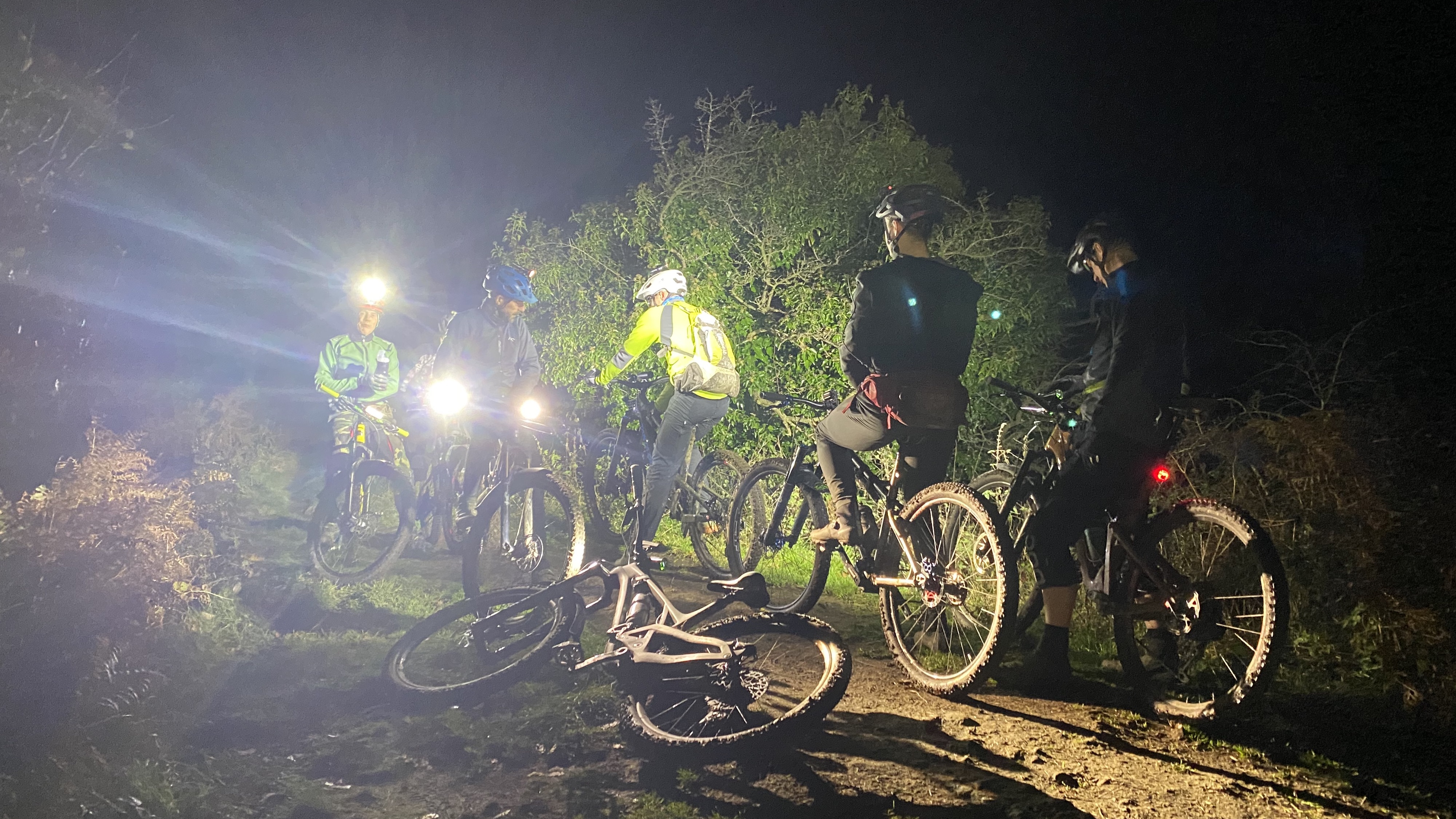
3. Winter wardrobe wins
The first thing you need to realize about winter clothing is that you can spend hundreds on the latest jackets and still make them worthless for just a few quid. In other words what you wear next to your skin is the most important part of any winter wardrobe. That’s because if your skin is wet you’ll lose body heat and become miserably cold much faster. That means wearing a wicking base layer that sucks moisture off your skin to evaporate through the outer layers – or at least a woollen one that stays warm when wet – is vital. Don’t think you have to spend a fortune either as some supermarket ski wear base layers are excellent. Check labels at every price point too as ‘technical’ layers can still often contain a lot of cotton which is freezing when wet and very slow drying too, so save your ‘cool’ logo T-shirt for after the ride.
Extremities are extremely important too, as numb fingers mean no control and freezing feet are miserably painful. Again you can spend hundreds on boots that will soon fill with water and freeze or win for a few quid with wool or thermal socks from the ‘middle of’ aisle during supermarket ski week. If you don’t mind a green or camo vibe, you can get some awesome bad weather gear from your local army surplus supplier for a killer price too.
The second thing you need to realize is that trying to stay dry while mountain biking is generally pointless. If it rains hard, moisture will always get through and if you pedal hard sweat will always build up faster than you can vent it away. And if you’re working hard while rain is soaking through the pores designed to let sweat out you’re doubly damp. As a result, just aim to stay warm however wet you are by balancing likely weather against likely work rate then choosing mid and outer layers that stop you losing or gaining heat too fast.
Expert tip
Using multiple layers which you can open/remove/zip-up/add lets you adjust ‘system’ performance much more accurately on variable days. More layers also trap more air which boosts overall insulation so you get more warmth and protection for less weight.
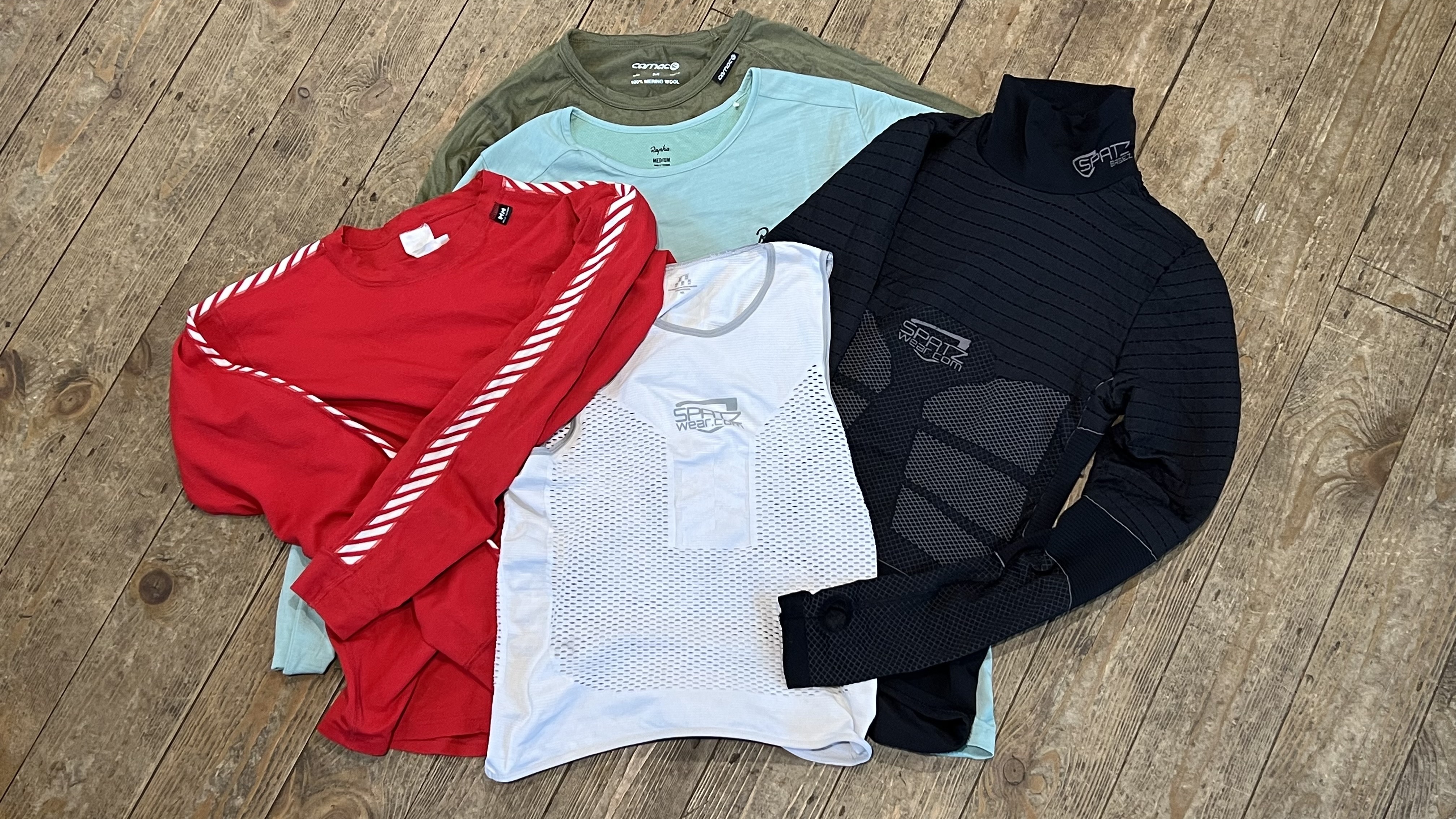
4. Lights, action
It’s dark before you go to work and dark before you come home and dark for most of the weekend too. Yet we’re constantly amazed by how few riders have lights so they can carry on riding without the sun in the sky. Plus, even trails that are dull on a gravel bike transform into a crazy playground once you concentrate all your attention into a narrow light beam, so even riding from your door can be a total blast. You’re also way less likely to meet other people after dark so busy daytime trails are back on the agenda after sunset.
A decent set of bike lights that’ll give you a couple of hours uncompromised riding isn’t even expensive anymore and LEDs are also far tougher and more reliable than traditional bulbs from back in the day. In terms of numbers, 1,000 lumens is enough to have fun, but make sure you have enough run time to get out and back with plenty of charge left for unplanned stops and battery drain if it’s cold or they’re old. Make sure the mounts fit your light and helmet securely too, as a wobble will seriously disturb vision and having a light spin round and shine right in your face is a complete – and surprisingly common – disaster
Expert tip
Two mid power lights – one on the bars and one on your helmet – gives much better overall night vision than a single high powered light in either position. Plus, you’ve still got one light to get back to safety with if the other one dies.
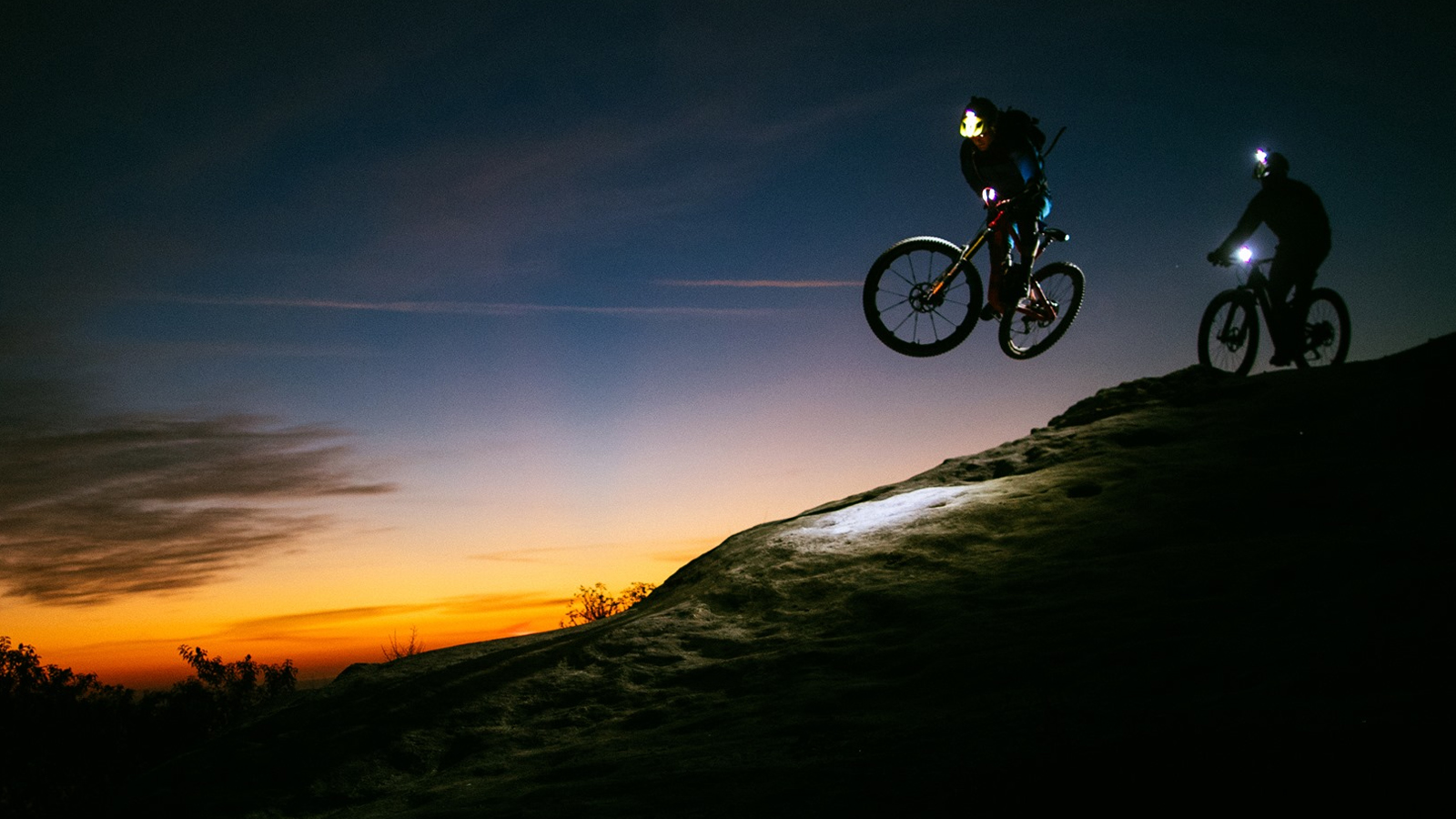
5. Stay safe
I touched on this in group rides but it’s worth stating again. Winter weather means things can get serious, very quickly if you get stuck or stopped. Even in you crash in your local woods on an evening it could be hours before a dog walker finds you in the morning, but out in the wilds it could be days. That’s why group riding is a lot safer, and a phone beacon or similar tracker alert essential if you're riding solo. Take extra layers to keep you warm if you have to stop and make sure you have all the spares you might need if you’re more than a few minutes walk from safety.
Winter makes trails more slippery, night riding makes them harder to read and the wet, cold conditions mean any mechanical or injury stop can become serious in freezing temps. In other words, don’t ride sketchy stuff in winter as the chances of getting into big trouble are much higher.
Be aware that increasingly destructive winter storms can turn streams into impassable rivers and bring down trees blocking trails/roads. Many of these concerns apply to getting to the start of a ride or getting home afterwards too, so if in doubt, don’t take unnecessary risks and place extra burdens on already stretched rescue crews.
Expert tip
If you don’t believe how quickly things can go bad in winter, just stop and sit down for 15 minutes when you’re next out riding and see how cold you get. I guarantee you won’t forget to take an extra layer and, ideally, a foil emergency blanket on every winter ride afterwards.
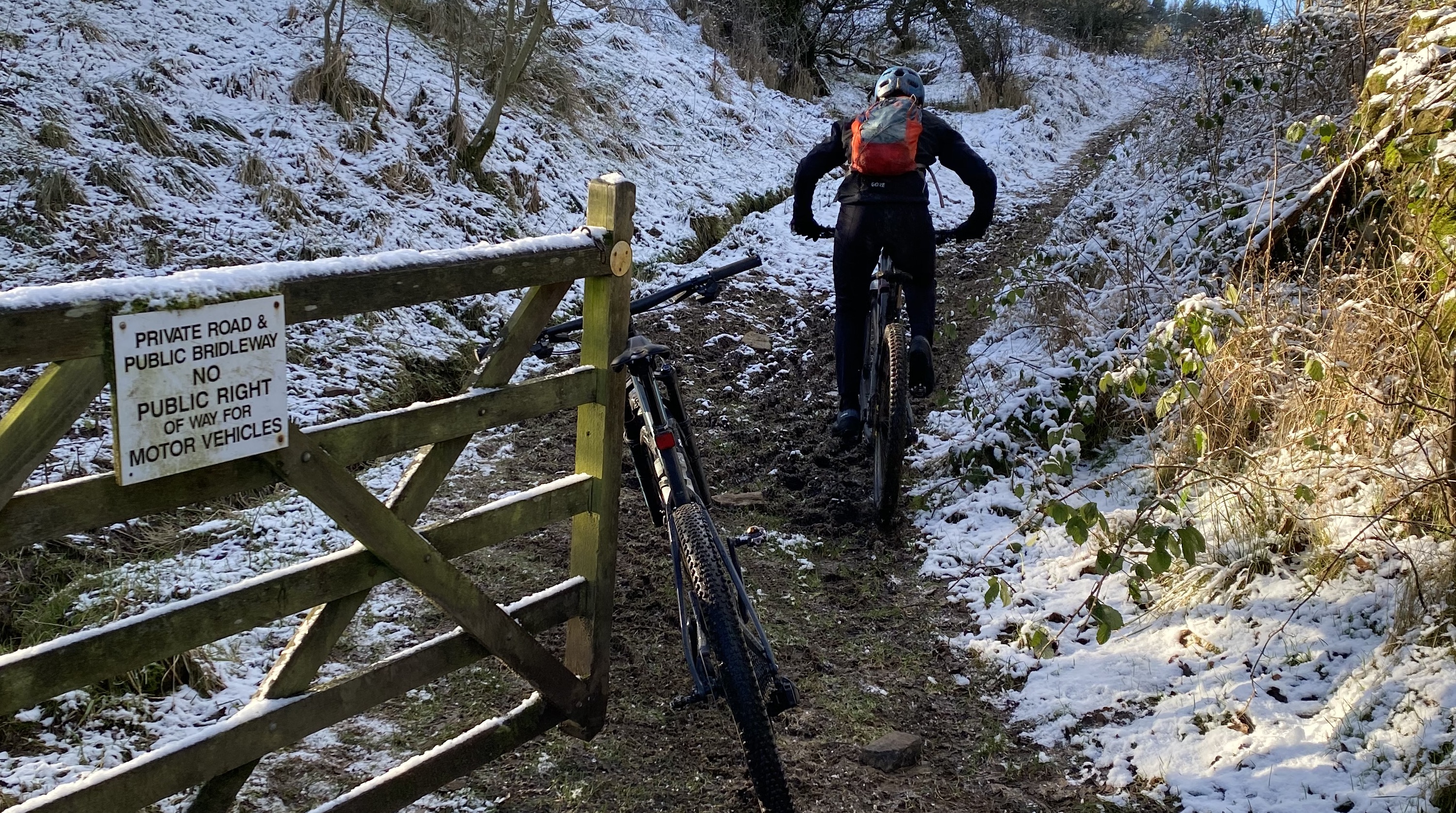
6. Trails that don't fail
Plugging through axle deep filth is no fun and other trail users won’t thank you for leaving obvious ruts everywhere even if hooves and feet are doing the most damage.
Thankfully there are loads of ‘all weather trails’ that ride great year round, but if you want to go natural, pick rocky, sandy or otherwise well drained trails to reduce the damage and increase the fun.
Expert tip
If your local sanctioned trails get too wet, don’t ride them to death or give up riding until loam time again. Find the official trail care group and join that – or get your own posse together if there isn’t an official one – and do some trail maintenance to repair damage and improve drainage before the runs are ruined forever.
7. Fuel your fire
Food and drink might seem a minor concern compared to cold and trail conditions but like everything else, keeping fueled up and hydrated so you can stay warm and think straight is even more important in winter. Eat regularly and early and don’t assume because you’re colder you aren’t sweating like you do in summer, as your hydration needs are basically the same.
Expert tip
If you don’t fancy sucking on an ice pop heat up a sports drink and stick it in a thermal bottle or flask for the bikers' equivalent of mulled wine.







